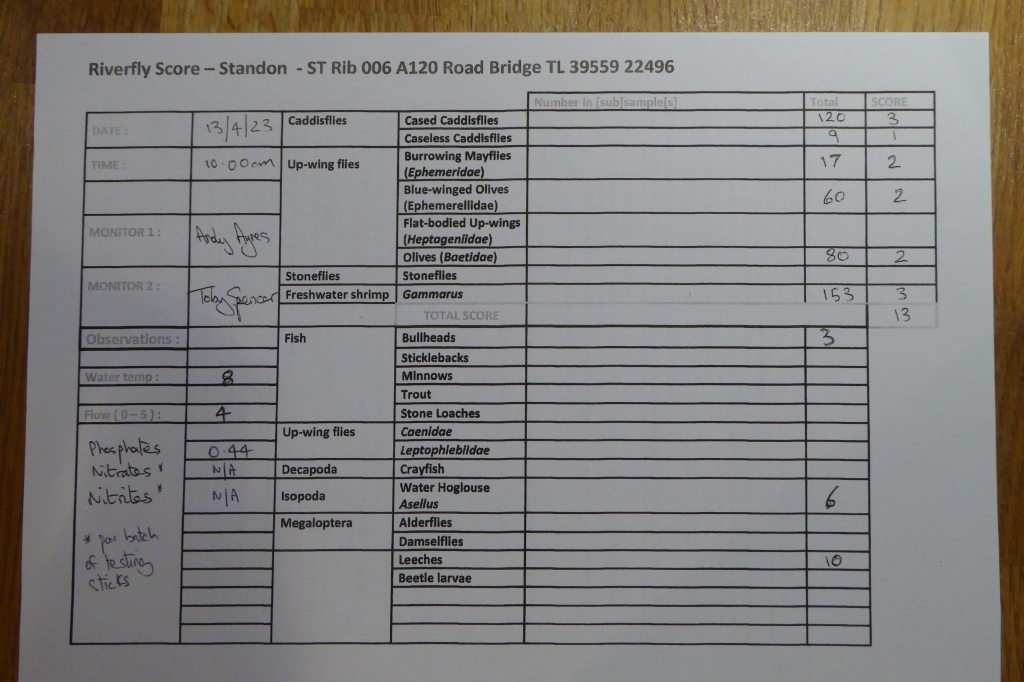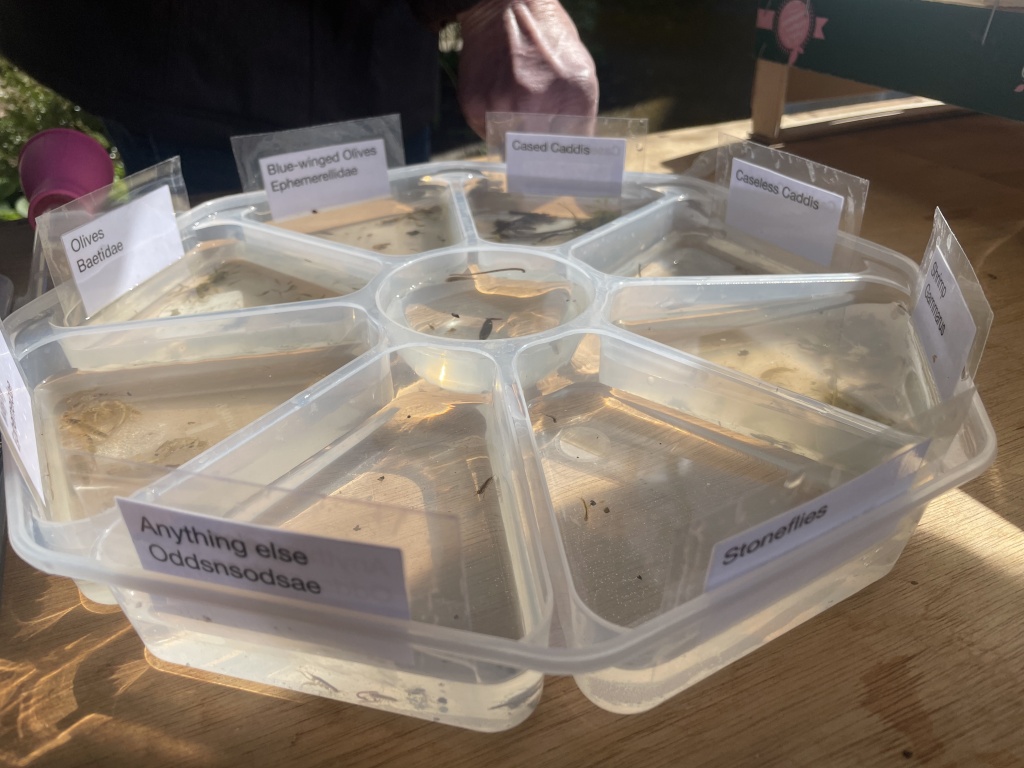With the state of our rivers and seas remaining in the public spotlight, it is a real challenge to keep this blog and its readers up to date with developments.
The local elections in North East Hertfordshire produced some dramatic changes to the make up of the District Council and I suspect our rivers played at least a small part in those results.
At a national level we have seen an apology from Water UK on behalf of the industry they represent, with a suggestion that with £10 billion from customers, all should be fixed by 2030. A welcome acknowledgement of the problem and their culpability, but somewhat misguided to ask for such a large sum from customers to clear up a mess that Ofwat have asserted has already been paid for.
Sir Oliver Heald contributed to the Water Quality: Sewage Discharge Debate in the House of Commons on 25th April, which I’ve reproduced from Hansard below;
This is an important issue, and I agree with the hon. Member for Barnsley Central (Dan Jarvis) that all parties in this place should work to improve what is a very difficult situation for our constituents and the country.
My constituency has eight chalk streams, and I have been campaigning for many years to improve their quality, often with support from Labour Members such as Martin Salter—he is a keen angler—and cross-party members of the all-party parliamentary group on chalk streams, which I helped to set up.
I was shocked when two of my substantial chalk streams, the Beane and the Mimram, ran dry in 2007. I took the Labour Minister to see them, and he was shocked by their condition. The World Wide Fund for Nature joined me and others in starting a campaign, “Rivers on the Edge”, to reduce the huge amount of water being abstracted from these streams. We were successful in that campaign, although by then the Government had changed. It then became clear that not only were these poor streams being abstracted, but they faced pollution, problems with agricultural practice next to them, with nitrates going into them, and all sorts of other problems, including sewage overflow.
I pay tribute to Charles Rangeley-Wilson, who has been involved in all the campaigns, including those against pollution and soil erosion, and to my right hon. Friend the Member for Ludlow (Philip Dunne), whose Bill I supported; we both rebelled slightly against the Government on one occasion over that issue. Charles chaired Catchment Based Approach in producing a restoration strategy for chalk streams, which is a good document that the Government support. The Under-Secretary of State for Environment, Food and Rural Affairs, my hon. Friend the Member for Taunton Deane (Rebecca Pow) came to its launch by the River Mimram is located here in my constituency, and it sets out a national chalk streams strategy. Although many of its recommendations are not about the problem of sewage overflows, it does cover that.
The Government have taken powers in the Environment Act 2021 and the Agriculture Act 2020 that would enable a catchment-based approach to tackling the range of issues involved in river quality. The water plan, which has been released recently, shows where the investment would be, with fines imposed and money reinvested in improving water quality. One of the main recommendations was to have some sort of protection and priority status for chalk streams. I know that the Secretary of State is concentrating on water generally, but Lord Trenchard has tabled an amendment to the Levelling-up and Regeneration Bill and I wonder whether she would be prepared to consider it.
We know that the state of our rivers and streams is not what it should be, but between 2000 and 2010 we really did not know that, because the monitoring did not take place. It came as a shock that our rivers were in the state they were in. I welcome the fact that the Government are now being transparent, are committing to targets and are really taking this on.
Viscount Trenchard also spoke in the House of Lords, introducing an amendment to the Regeneration and Levelling up Bill to bring specific “protection for chalk streams so as to reduce the harmful impacts of excessive abstraction and pollution and improve their physical habitat”:

Viscount Trenchard introduced his amendment with the following words;
My Lords, I apologise that I have not participated at Second Reading or earlier in Committee on this landmark Bill, but I am grateful for the opportunity to move my Amendment 372ZA, which seeks to secure greater protection for our wonderful chalk streams, which I believe play a uniquely important part in England’s landscape and natural environment. I thank the noble Baroness, Lady Bakewell of Hardington Mandeville, for adding her name in support of the amendment.
I declare an interest as the owner of a short stretch of the River Rib, a chalk stream in Hertfordshire. I salute the hard work and commitment of my right honourable friend Sir Oliver Heald, Member of Parliament for North-East Hertfordshire. I declare another interest, in that I am the president of the North-East Hertfordshire Conservative Association, which has recently adopted Sir Oliver as its parliamentary candidate at the next general election. Sir Oliver’s work to improve the environment, particularly the quality of the eight chalk streams in his constituency, is supported by very many of his constituents, of all political persuasions.
In his speech in another place on 25 April, my right honourable friend observed:
“The Government have taken powers in the Environment Act 2021 and the Agriculture Act 2020 that would enable a catchment-based approach to tackling the range of issues involved in river quality. The water plan, which has been released recently, shows where the investment would be, with fines imposed and money reinvested in improving water quality. One of the main recommendations was to have some sort of protection and priority status for chalk streams”.—[Official Report, Commons, 25/4/23; col. 619.]
Some of Hertfordshire’s chalk streams are in a worse state than others. I am fortunate in that the Rib, where it runs past my house, has never run dry, although abstraction undoubtedly contributes to a worryingly reduced flow in midsummer. Some 85% of the world’s chalk streams are in England, and the remainder are in northern France and Denmark. Many of the rare and beautiful habitats that our chalk streams undoubtedly provide suffer a daily onslaught of pollution and over-abstraction.
I welcome the Government’s decision to support the chalk stream restoration strategy published by Catchment Based Approach’s chalk stream group. CaBA is supported by and works with all the major stakeholders, including environmental NGOs, water companies, local authorities, government agencies, landowners, angling clubs, farmer representative bodies, academia and local businesses. Its chalk stream restoration strategy, published in November 2021, sets out how England’s chalk streams can be restored to a near-natural state.
A 2014 review of England’s chalk streams found that 77% failed to meet the required classification of good ecological status as assessed by the Environment Agency, 75% had been significantly modified from their natural state and 55% were at risk from over-abstraction. The primary recommendation of the chalk stream restoration strategy, entitled the “one big wish”, which is supported by all the organisations, companies and agencies involved in the report’s development and by the consultation responses from stakeholders, is for
“an overarching statutory protection and priority status for chalk streams and their catchments to give them a distinct identity and to drive investment in water-resources infrastructure, water treatment … and catchment-scale restoration”.
The Government’s response so far to the one big wish reads:
“Defra is currently looking for opportunities to deliver on this recommendation. The Retained EU Law (Revocation and Reform) Bill provides an opportunity to consider how stronger protections and priority status for chalk streams can fit into reformed environmental legislation”.
In addition, chalk streams have been given priority status in the stormwater reduction plan. Is the intention still to use the REUL Bill to achieve this goal? Does the Minister agree that, as this Bill already deals with the reform of some relevant retained EU environmental legislation affecting planning decisions, my amendment provides a good opportunity for the Government to achieve their stated objective of protecting chalk streams? It would ensure that the impact on chalk streams of relevant projects is explicitly considered, avoided where possible, or mitigated.
An enhanced status for chalk streams, including within the planning framework addressed by the Bill, would drive the investment and resources that have been severely lacking, not only for chalk streams but, as the report by the Environmental Audit Committee of another place made clear, for the protection and enhancement of biodiversity more broadly. It could mobilise resources from several sources, including the option contained within the ELM scheme for chalk stream investment.
Noble Lords may wonder why my amendment covers only chalk streams, as other types of rivers and streams are also in great need of investment. An integrated approach to restoring all types of habitat and associated species through the restoration of natural ecosystem function, particularly natural catchment function, helps to deliver multiple biodiversity benefits alongside a wealth of natural capital associated with restored aquifer recharge, tackling pollution at source and natural flood management, as argued in a Natural England report in 2018.
Nevertheless, the chalk stream restoration strategy argues that the global rarity of English chalk streams provides a potent justification for singling out this river type among others. There are other justifications—for example, the fact that chalk streams are under particular stress because many of them flow through a highly developed landscape; they have been particularly stressed by the myriad ways in which their channels have been modified over time; they have distinct biodiversity, cultural and heritage value; and, for hydrological reasons, they are far less capable of self-repair than higher-energy rivers. Very few chalk streams enjoy protected site status, and an additional degree of protection would act as an exemplar to show how such an integrated approach can be used for these streams, ultimately showing the way for natural recovery of all rivers, streams, fens, lakes and other freshwater habitats.
There is a wide divergence of outcome to be shown with abstraction. All the designated chalk streams have abstraction targets within the CaBA chalk stream group target of no more than 10% of catchment recharge but, on the most extreme examples of the “ordinary” chalk streams, over 50% of the effective catchment recharge—in other words, the rainfall that sinks down into the aquifer—is abstracted, and in dry years that becomes all the effective recharge for those aquifers.
To take another example: on the few designated chalk streams, between 75% and 90% of sewage works remove phosphorus through advanced tertiary treatment. That proportion falls to between 18% and 30% on the ordinary chalk streams. This is why all the partners in the CaBA chalk stream group identified a higher status of protection as key to delivering the aims of the strategy.
The chalk stream restoration strategy sets out a comprehensive and interconnected series of recommendations, covering a range of actions across the catchment needed to restore chalk streams to ecological and functional health. They encompass abstraction reform, water quality, species and habitat improvements in both variety and abundance, land management and development. The Government have shown a commitment to support the recommendations of the report, subject to consideration, and to the suggestion of a specific category of protection. There is a need to ensure that the Government deliver on those commitments. Incorporating my amendment into the Bill would support that aim. I beg to move.
All contributions that move us closer to the ending of abstraction and pollution of our chalk stream environments are to be welcomed. However our position remains that;
The River Rib and Quin catchment is over abstracted. It is abstracted at one of the highest levels in the county, yet disproportionately supports one of the lowest populations compared to other catchments in Hertfordshire.
The Rib and Quin are polluted. That pollution derives from many sources and the spilling of raw sewage by Thames Water into them is only one of them. However,
90% of Hertfordshire’s total of 3800 hours of raw sewage spills in 2022 were in the Lea Catchment, with only 10% in the Colne Catchment. And 50% of that total was released in Sir Oliver Heald’s North-East Hertfordshire constituency.
Rumours of Thames Water investment at Buntingford, Barkway and Therfield are welcome. How adequate they are (when they come) only the future will tell, though waiting 30 years for phosphate stripping at Buntingford doesn’t bode well.
It is this apparent imbalance, lack of equanimity and inequality in the treatment of rivers and chalk streams across the county and country that leads some to question the effectiveness of the Catchment Based Approach. Whether or not CaBA can deliver for East Hertfordshire chalk streams is perhaps a mute point however, without an effective regulator, resourced and empowered to protect the environment.


























